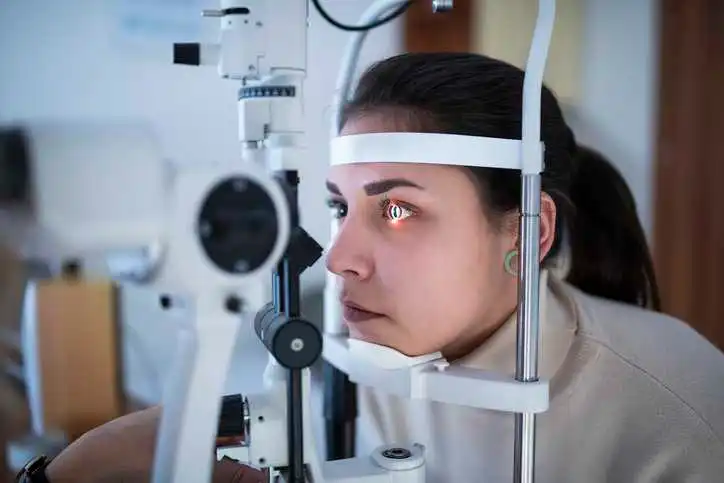ISO 15004-2:2024—Ophthalmic Instruments Radiation Safety

The eyes are the most vital sensory organs. As such, minimizing eye ailments cases is essential. Ophthalmologists, optometrists, and eye surgeons use ophthalmic instruments to examine, diagnose, and treat eye conditions. ISO 15004-2:2024—Ophthalmic instruments – Fundamental requirements and test methods – Part 2: Light hazard protection provides requirements for optical radiation safety for for ophthalmic instruments.
What Is the Main Hazard of Optical Radiation for Ophthalmic Instruments?
The primary optical radiation hazard for ophthalmic instruments is the potential for damage to the eye tissues, particularly the retina. Damage to the eye can occur due to excessive exposure to light from the instrument, which can cause thermal burns, cataracts, or even vision loss—especially when the pupil is dilated during an examination. The risk of optical radiation increases with concentrated beams of light entering the eye during procedures like laser surgery. To reduce the risk of retinal damage from intense light, safety guidelines like those in ISO 15004-2:2024 have been developed.
What Is ISO 15004-2?
ISO 15004-2:2024 specifies fundamental requirements for optical radiation safety for ophthalmic instruments. The standard is applicable to all ophthalmic instruments that direct optical radiation into or at the eye. ISO 15004-2:2024 is also applicable to all new and emerging ophthalmic instruments that direct optical radiation into or at the eye, as well as to those portions of therapeutic or surgical systems that direct optical radiation into or at the eye for diagnostic, illumination, measurement, imaging, or alignment purposes.
What Are the Changes in the 2024 Edition of ISO 15004-2?
ISO 15004-2:2024 cancels and replaces the first edition (ISO 15004-2:2007), which has been technically revised. The main changes are as follows:
- The terms and definitions include dose limited instruments and time limited instruments
- The safe exposure limits have been reorganized into 4 tables (Tables 2 to 5), and the associated measurement conditions have been reorganized into a companion table (Table 6).
- A number of Group 1 (ophthalmic instruments for which no potential light hazard exists) exposure limits) and Group 2 (ophthalmic instruments for which a potential light hazard exists) recommended maximum exposures (RMEs) have been updated to conform to recent research and relevant standards.
- The language has been clarified and simplified throughout the document, and a flowchart has been added as a guide to make the standard more accessible to first-time users
- Clauses and associated exposure limits have been added for long-term repetitive exposures, such as may apply to extensive use of head-mounted displays by people with visual impairments.
- Provisions have been added to ensure that the exposure limits and RMEs applicable to specific devices are easily accessible to end users.
ISO 15004-2:2024—Ophthalmic instruments – Fundamental requirements and test methods – Part 2: Light hazard protection is available on the ANSI Webstore.






